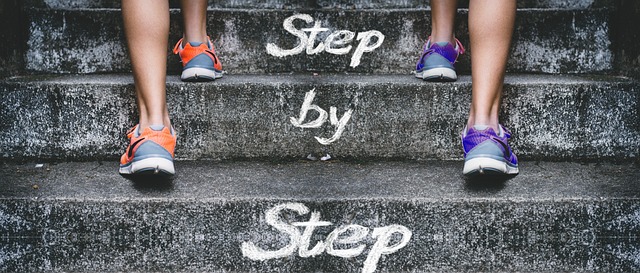Read to learn about five outdoor walking exercises advised by personal trainers, as well as how you can get the most benefits out of them.
Outdoor walking, whether it’s a quick walk around the neighborhood or a 45-minute power walk, can benefit both physical and mental health.
Working out can be the last thing on your mind at times. You might not have the urge or energy to put on your shoes and walk outside, but outdoor walking is a terrific activity with numerous health advantages. Here are some different types of walking you can do.
- Alternate between slow and fast walking
- power walking
- incline walking
- Combine walking with body weight Exercises
- Walking with a weighted Vest
Regular outdoor walking can help you improve your cardiovascular fitness, lose weight, lessen your risk of chronic disease, lower your resting heart rate, and boost your immune system. It can also boost energy, improve sleep quality, boost cognitive function, reduce stress and anxiety, and fight depression.
The best part is that you may begin walking now to improve your fitness and clear your thoughts.
Alternate between slow and fast walking.
Walking at different speeds strengthens several leg muscles, including the glutes, quadriceps, hamstrings, calves, and hip adductors. Your body will become stronger, and your cardio will improve over time, allowing you to walk faster for longer periods of time.
If you don’t want to walk at a fast pace the entire time, you may still get a good workout by alternating between a slow, leisurely pace and a faster one. Strive for a one-to-one ratio of brisk to normal walking.
Here’s how:
- Warm up by walking at a comfortable level for 5 to 10 minutes.
- For 1 minute, walk at a vigorous speed.
- For 1 minute, walk at a normal pace.
- For 30 minutes, repeat the pattern.
- Gradually increase your brisk walking time to 5 minutes while maintaining the one minute rest period as your fitness improves.
Walking at about a pace of 3.5 miles per hour can burn approximately 300 calories per hour for the average individual, which means you will burn fat and carbs while enhancing cardiovascular health by alternating between regular and brisk walking.
Brisk walking improves brain fitness and cognitive function by increasing blood flow to the brain, allowing you to receive the mental benefits of less stress and anxiety, enhanced mood, and better memory. Altering between fast and slow walking will also help you prepare for more demanding types of exercise, such as running and lengthy walks.
Power Walking.
Power walking is comparable to regular walking. However, it is done at a quicker pace (usually 4 to 5.5 MPH) while also using your arms. Consider it “nearly running,” except that one foot has to be in constant contact with the ground at all times to be classified as power walking.
The step in front is shorter to travel faster or to power walk. Long strides in front might actually slow you down and cause a choppy walk, putting additional strain on your joints.
You also commonly pump your arms while maintaining them flexed at a 90-degree angle to build velocity. These rigorous movements challenge your balance and stability while working your shoulders and upper back. Furthermore, faster walking will provide good exercise for your quads, thighs, calves, and glutes.
This power walking routine will burn calories while remaining quite safe.
Here’s an example of a power walking workout.
- Warm up by walking at a comfortable level for 5 to 10 minutes.
- For 20 minutes, power walk at a fast speed.
- To cool down, walk at a normal pace for 5 minutes.
Incline Walking (Stairs or Hills)
If you don’t have much time, climbing stairs or walking uphill can help you improve your cardio and build your thighs, glutes, and calves. Though it is a more intensive workout, incline walking may be gentler on your joints than faster walking on flat terrain or downhill walking, particularly if you are overweight or obese.

Climbing stairs is an excellent workout that can be done at work or on vacation if a gym or cardio machines are not available. Walking up and down hills and stairs is a relatively risk-free workout. However, if you already have knee or hip problems, experts advise against them. This more demanding workout may aggravate certain symptoms.
Here’s how to work out on the stairs.
- Warm up by walking at a comfortable pace for 5 minutes on a flat area.
- 2 minutes of stair climbing. Make every effort to maintain a steady pace.
- Walk down the stairs comfortably and take a one-minute break.
- For 15 to 20 minutes, repeat the pattern.
Combine walking and bodyweight exercises.
If your walking workouts have gotten boring and monotonous, try incorporating bodyweight exercises. Interval bodyweight exercises will turn your walk into a full-body workout, allowing you to gain strength and build lean muscle.
Including bodyweight exercises in your walking routine trains your complete body while also saving time because your muscles can recover while you walk.
The trick is to discover bodyweight workouts that you can do without straining yourself too much. You’ll be able to do more repetitions and sets as you get stronger, which means bigger muscular development while reaping the health advantages of walking.
Here’s how to add bodyweight workouts to your workout.
- Warm up by walking at a comfortable pace for 5 minutes.
- For 5 minutes, walk at a moderate speed.
- 10 to 20 repetitions of a bodyweight workout (or however many you can do with proper form).
- Repeat until you have done five bodyweight exercises.
- Legs (glutes, hamstrings, quads, calves), arms (biceps, triceps), chest (pectorals), core (abdominal muscles), and shoulders are all worked out in this full-body workout. If you’re looking for ideas for bodyweight workouts, try push-ups, air squats, walking lunges, tricep dips, or sit-ups.
Walking with a weighted vest.
Wearing a weighted vest is a definite method to crank up your fitness level for those looking to up the ante on their walking sessions. Wearing a vest increases your intensity, which can improve your speed, endurance, and strength. Furthermore, vests aid in the burning of more calories, the maintenance of bone mineral density, the improvement of balance, and the enhancement of leg strength.
The extra weight will work your cardiovascular system more than a routine walk and significantly increase the demand on your glutes and calf muscles. Despite the increased intensity, it’s a safe approach to train.

Begin with a weighted vest and remove weights in 1/2 to 1-pound increments, gradually increasing the weight as you gain strength. The weight you add, however, should not exceed 10% of your body weight. Most people begin with 2 to 5 pounds and gradually increase their weight.
Here’s how to include a weighted vest in your workout routine.
- Warm up by walking at a comfortable pace for 5 minutes without a weighted vest.
- Put on the weighted vest and walk for 10 to 15 minutes at a reasonable pace.
- When first beginning out with weighted vests, don’t push yourself too hard; begin with 10- to 15-minute walks and progressively increase your walking time.
- Increase the time by 5 minutes at a time until you can complete 30 to 45 minutes.
Safety Recommendations on Walking Exercises
When performing any type of walking training, keep the following vital safety guidelines in mind:
- Warm-up and cool down before exercising to avoid injury.
- Take a walk during the day.
- Take a walk on the sidewalks, trails, or municipal parks.
- Stay away from jaywalking.
- Choose well-lit and well-traveled roads.
- When walking in hot weather, stay hydrated.
- If you’re out for a walk in chilly weather, wrap up.
To Conclude
Outdoor walking is a fantastic exercise for your body, mind, and well-being, but if you want to grow fitter and healthier, you must have a strategy. That is why having these outdoor walking workouts on hand can help you keep consistent in getting outside when you lack motivation. Talk to your friends or neighbors who are avid walkers. They might even join you when you are ready for a neighborhood stroll.

